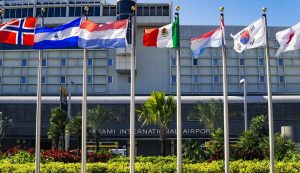Family Reunification in the USA

Family reunification in the USA is one of the pathways to naturalization for residents of other countries through family ties between non-citizens and a relative who is either a U.S. citizen or a Green Card holder, aged 21 or older.
The naturalization process can be lengthy because a large number of people use this route. After a citizen or Green Card holder submits a petition, their relatives enter a long queue, after which they may eventually receive a Green Card as well.
Although the wait time can be quite long, ranging from 1 to 12 years, there are some exceptions that allow relatives to obtain residency permits much faster. Therefore, if the goal is to immigrate to the U.S. immediately, this option may not be the best first choice.
Groups in the Family Reunification Process in the USA
There are two main groups and exceptions that have certain quotas for receiving residency permits, which we will now explain.
The first group is IR — for parents and spouses of U.S.-born citizens. This group does not have any quota and there are no limits on the number of people who can apply for family reunification in the U.S. within a year. In this case, the process of obtaining a residency permit can be completed in as little as one year.
The IR (Immediate Relative) group, which includes close relatives, is further divided into subgroups:
- IR-1: This group is for the spouse of a U.S. citizen who has been married for at least two years. The advantage is that holders of this visa can legally work in the U.S., travel abroad, and enjoy other rights while their application is being processed.
- IR-2: This group is for children of U.S. citizens who are under the age of 21. A key condition is that the children must be unmarried.
- IR-5: This group is for parents of U.S. citizens who are 21 years of age or older.
There is also the F (Family Preference) group, which includes more distant family ties, among which are (not to be confused with the F-1 student visa):
- F1: This group includes unmarried grandchildren of U.S. citizens under the age of 21. The annual quota for these visas is 23,400, and the wait time is between 1 and 5 years.
- F2: This group includes spouses and children (under 21) of U.S. citizens or Green Card holders. The annual quota for these visas is 114,200, with 77% of all spots reserved for U.S. citizens (those who have already obtained citizenship). The wait time is between 1 and 4 years.
- F3: This group includes all married children of U.S. citizens and their young children. The annual quota for these visas is 23,400, plus any unused visas from the F1 and F2 categories during the current calendar year. The wait time is between 8 and 10 years.
- F4: This group includes siblings of U.S. citizens (who are 21 years or older), as well as their spouses and children (nephews and nieces of the U.S. citizen) under the age of 21. The annual quota for these visas is 65,000, with a wait time of 7 to 15 years.
There is also a special group for “conditional residents” (CR), which includes two types of visas:
- CR-1: This visa, similar to the IR-1, is granted to those who have been married for less than two years to a U.S. citizen. If the marriage is dissolved within the two-year period, the holder of this visa is deported back to their home country.
- CR-2: This visa is intended for the children of CR-1 visa holders who are under 21 years of age. An important condition is that the child must be under 18 at the time of the marriage; otherwise, the visa will not be granted.
The greatest demand for family reunification visas in the U.S. is for the F2 visa, as many Green Card holders apply annually to bring their relatives to the United States. The law allows for an increase in the quota if unused visas remain in other groups or if the number of applications reviewed for other F group visas decreases, especially if the demand for this type is high in a given calendar year.
When choosing this path to naturalization, it is also important to remember that USCIS always prioritizes close family members over distant relatives. The same applies to children. Minor children will always be prioritized over adult children and even spouses. In the U.S., children are always given top priority.
How the Family Reunification Application Process Works in the USA

The initiator of the family reunification application process in the U.S. is always the U.S. citizen or Green Card holder, who must fill out Form I-130. This individual submits the form to USCIS (U.S. Citizenship and Immigration Services), where, after initial moderation, the application is forwarded to the NVC (National Visa Center). If the application reaches USCIS and is incorrectly filled out or contains information that is not aligned with the family reunification program in the U.S., it may be rejected.
Once the application is processed by NVC, they will begin to request a list of documents required for the case under consideration. The petitioner must gather all originals or copies (if sending originals to NVC is not possible) and provide them upon request. The term “impossible” only refers to cases where relatives are not with the petitioner in the U.S. and can only send scanned copies or photographs for documentary confirmation.
After NVC processes the application, the data is sent to the country where the relatives reside, and they are invited to an interview with a consular officer.
During the interview, the consul will review the familial relationship, request photos with the relative, and any other documents proving the family connection. In addition, the consul will focus on the financial aspect of the immigration process. The U.S. government wants to ensure that immigrants do not become a financial burden on taxpayers, so the consul will primarily be interested in the Affidavit of Support. This document obligates the petitioner to financially assist and/or support their relatives once they arrive in the U.S. The petitioner must provide proof of a sufficient annual income, typically through tax documents, when submitting the case to NVC.
All progress in the process can be tracked on the USCIS website.
Documents Required for Family Reunification in the U.S.
To apply for family reunification in the U.S., the U.S. citizen or Green Card holder who wishes to reunite with relatives must submit the following documents:
- A completed Form I-130, which specifies (if the relatives are outside the U.S.):
- The category under which the application is being processed;
- Copies or originals of personal information for all individuals involved in the family reunification process in the U.S. This includes the U.S. citizen’s full name, date of birth, current residential address for future correspondence, and Social Security Number (SSN);
- Circumstances regarding how the U.S. citizenship or Green Card was obtained.
- Form I-485 (if the relatives are already in the U.S. and need to adjust their immigration status);
- Affidavit of Support from the petitioner.
Family Reunification in the U.S. with a Spouse
In addition to the basic documents mentioned above, the following are required:
- Two completed G-325A forms (one for each spouse);
- A copy of the marriage certificate or other document confirming the marriage;
- Proof of the absence of any other marriages, if applicable (e.g., death certificate, annulment decree);
- Passport-sized photographs;
- Documents proving a change in the name/surname of either spouse, especially if the names differ on submitted documents (if no name changes occurred, this is not necessary);
- Documents confirming U.S. citizenship status (a copy of a passport or Green Card).
Family Reunification in the U.S. with Children
In addition to the basic documents mentioned above, the following are required:
- A copy of the child’s birth certificate;
- A copy of the marriage certificate of the U.S. citizen (or Green Card holder) with a non-U.S. citizen who is the biological parent of the child or their child if appropriately recorded on the birth certificate;
- Parents’ documents (passports, foreign passports);
- Documents confirming U.S. citizenship status (a copy of a passport or Green Card);
- If the U.S. citizen is no longer married to the non-U.S. citizen parent, a document proving the end of the marriage (divorce/death certificate, annulment);
- If the U.S. citizen was not married to the biological parent before the child turned 18, documents confirming the relationship and legitimacy of the child must be provided, or other documents proving the parent-child relationship (including joint photos, financial involvement in the child’s life, etc., to demonstrate the emotional bond between the petitioner and the child).
Family Reunification in the U.S. with Parents
To the above-listed basic documents, the following are added:
Documents confirming U.S. citizenship status (a copy of the passport or Green Card);
A copy of the birth certificate reflecting the parents’ names;
If the child was born out of wedlock, a document confirming the paternal relationship with the father and/or evidence of any emotional attachment to the father formed before the U.S. citizen reached adulthood or got married.
Family Reunification in the U.S. with Siblings
To the above-listed basic documents, the following are added:
Documents confirming U.S. citizenship status (a copy of the passport or Green Card);
A copy of the birth certificate showing that the U.S. citizen and the person they are reuniting with share at least one biological parent.
The Cost of Filing a Family Reunification Application in the U.S.
At the time of writing this publication, the cost of applying for family reunification in the U.S. was $535. This amount covers only the processing fees and nothing more. Other expenses fall on the U.S. citizen and the person being relocated, including visa processing fees, interview fees, etc.
How Long It Takes for the I-130 Form to Be Processed Before Issuing a Priority Date
Considering the fact that USCIS carries the burden of reviewing numerous applications, including those required for various types of visa interviews, they face significant backlogs of applicants. It is known that I-130 applications are not prioritized, so there are certain criteria for the processing of applications and their queues:
- Spouse visas – starting from 1 year (CR/F);
- Child visas – from 1 to 5 years (CR/F);
- Married child visas – up to 9 years (CR/F);
- Sibling visas – up to 10 years (CR/F).
After the I-130 family reunification application is moderated, a Priority Date will be issued.
What is a Priority Date and What Role Does it Play in Family Reunification in the U.S.
A Priority Date is essentially the date from which the applicant’s petition enters the queue to directly receive a visa, considering all quotas, including those for various types of family reunification visas to the U.S. After reviewing the I-130 form, the applicant is issued a response in the form of I-797C, which will contain the date from which the relatives are placed in the queue. This Priority Date allows applicants to track their position in line and understand when it will be their turn, along with their family’s, to move forward in the process.
Table of Contents


